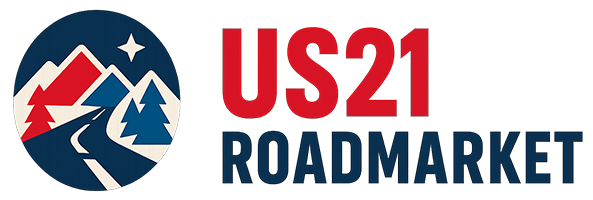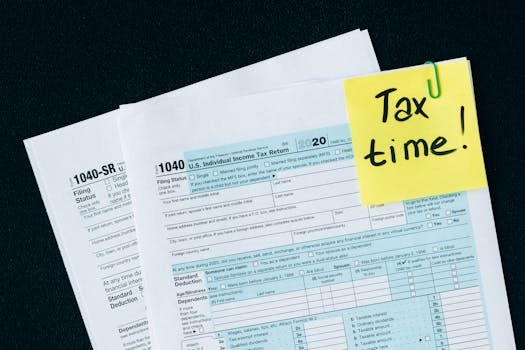Open US brokerage account as a non-resident—from a café Wi-Fi, your hostel bunk or the backseat of a bus. Here’s the step-by-step you can actually follow.
Introduction: Why nomads need access to US markets
If you live out of a carry-on and bounce between time zones, you still deserve the same investment rails as any office-bound investor. Access to US markets matters because: (1) they’re deep and liquid (tighter spreads, better price discovery), (2) the product shelf is massive (thousands of stocks, options, and compliant ETFs depending on your residency), and (3) fees are often lower versus local brokers. For digital nomads, this translates into portability—you can keep investing even as your address changes and your tax residence shifts.
This guide walks you through the non-resident onboarding journey: what documents you need, how to complete KYC, how to fund from Europe or LatAm (SEPA, SWIFT, ACH), what to do about PRIIPs if you’re in the EEA/UK, and how to maintain your account (address updates, W-8BEN renewals). Expect a practical, “you-can-do-this” tone with real examples and checklist files you can save offline. We’ll also address common worries—“Will my application be rejected?” “Do virtual addresses work?” “How do I prove where I live if I move every three months?”—and show you exactly what to prepare in advance.
A quick word on scope: this is educational, not legal or tax advice. Regulations change, brokers vary by country, and US-domiciled ETF access may be limited if you’re in the EEA/UK (we’ll explain why and what to do instead). If you follow the roadmap and prep your docs beforehand, you’ll reduce back-and-forth with compliance teams, avoid funding delays, and place your first trade faster—without breaking your travel rhythm.
Pre-requirements: Can you open an account from abroad?
The short answer: yes, in many cases. Large multi-jurisdictional brokers onboard clients from a long list of countries, but eligibility depends on your current tax residence, citizenship, and local rules. Interactive Brokers, for example, publishes an available countries and territories list—use it as a first check before you start your application. Interactive Brokers
Some brokers operate dedicated international programs (e.g., Schwab International) but do not accept applicants from certain jurisdictions due to US laws and internal risk policies. You’ll typically be asked to select your country/region to see whether you qualify; if your residency is blocked, you may be stopped at the application gate with a message citing federal regulations. Schwab Brokerage+1
Before you apply, verify that:
- Your current residence is on the broker’s supported list.
- You can supply acceptable proof of address (POA) less than 3–12 months old depending on the broker.
- You have a Tax Identification Number (TIN) for your tax country.
- You can receive SMS/voice for 2FA and upload clear scans.
- You understand what instruments you’ll be allowed to trade—US-domiciled ETFs may be restricted for EEA/UK retail investors under PRIIPs (details below). Parlamento Europeo+1
Restrictions by nationality and tax residence
Brokers look at both your citizenship and your current tax residency. Sanctioned countries, high-risk jurisdictions, or mismatches (e.g., mailing address in one country, tax residency in another with no plausible explanation) trigger manual review. Expect additional questions if your documentation shows multiple residencies or offshore mailboxes. Interactive Brokers, for instance, asks for clarifications when treaty addresses and mailing addresses differ (e.g., UK Crown Dependencies) and may require a written explanation. IBKR Guides
Practical takeaways:
- If you’re mid-move, wait until you can prove a stable address in your current country (bank statement or utility bill).
- Virtual mailboxes/co-working letters are frequently rejected—favor bank/govt documents.
- If a broker doesn’t support your new residency, check alternatives (other global brokers, or local brokers with US access). Don’t fight the gate—switch the broker, not your story.
Basic documentation needed
Prepare a doc pack before you click “Open Account”:
- Passport (valid 6+ months).
- Proof of Address (POA) from a recognized issuer—bank statement, utility bill, or government letter—recent (≤ 3–12 months per broker).
- TIN for your tax country.
- Secondary ID (driver’s license/national ID) helps.
- Selfie/liveness (neutral background, good lighting).
- Willingness to complete Form W-8BEN (individual) or W-8BEN-E (entities) to certify non-US status for withholding/treaty benefits. Interactive Brokers+1
The onboarding process step-by-step
Nomad-friendly onboarding is about sequencing and clean files. Here’s the flow most brokers follow.
KYC (Know Your Customer): what documents to prepare in advance
KYC verifies who you are and where you live. Expect to upload a passport and POA. Keep scans at 300 DPI or better, edges visible, no edits/annotations. Ensure the name and address match exactly across documents and forms. If your Latin-character name differs from your passport’s MRZ format, stick to the broker’s requested transliteration. Some brokers publish granular lists of acceptable documents and recency requirements—study them to avoid preventable rejections. Interactive Brokers
Pro tips for travelers
- Carry a bank statement PDF from a local bank or fintech with your full address (not a P.O. box).
- Keep a back-up POA from a different issuer in case one is rejected.
- If your mailing address and tax address differ, prepare a short explanation letter to upload when requested. IBKR Guides
Proof of address without a fixed domicile
No lease? No problem—use a financial or government-issued document with your name + current address. Commonly accepted: bank statements, utility bills, municipal letters, or tax letters. Documents should be recent and unaltered (screenshots are often rejected). If you’ve just arrived in a new country, open a local account or register your address as soon as possible so you can generate an acceptable document. Avoid virtual office receipts; brokers frequently reject them during compliance review.
If your situation is unusual (e.g., living between countries), explain it proactively in the application notes and be ready to provide additional evidence. The goal is to make the compliance officer’s decision easy: clean document, clear address, credible story.
Completing the W-8BEN form
Form W-8BEN certifies that you’re not a US person and allows the broker to apply treaty withholding (if your tax country has a treaty with the US). For individuals, W-8BEN generally remains valid from the signature date until the last day of the third succeeding calendar year, unless a change in circumstances occurs (e.g., you move countries). Brokers will prompt you to renew before expiry. irs.gov+1
What you’ll fill:
Line 1 Name of individual: YOUR FULL NAME (as in passport)
Line 2 Country of citizenship: COUNTRY
Line 3 Permanent residence address: STREET, CITY, POSTAL, COUNTRY
Line 5 U.S. TIN: (leave blank if none)
Line 6 Foreign TIN: YOUR TAX ID (e.g., NIE/NIF, NIF PT, CPF, etc.)
Part II Claim of Tax Treaty Benefits:
9a I certify that... resident of [TREATY COUNTRY] within the meaning of the treaty
10 Special rates and conditions: (if applicable)
Signature, Date (YYYY-MM-DD), Capacity in which acting: Individual
Brokers like IBKR provide in-platform guidance and will store your W-8 for withholding/reporting (1042-S). Keep a PDF copy and diary the expiry. Interactive Brokers+1
Funding methods: SEPA, SWIFT and ACH from Europe/LatAm
You’ve passed KYC—now move money. Your options and timing depend on your bank, currency, and broker setup.
- SEPA Credit Transfer (EUR → EUR): Standard SEPA typically arrives next business day; SEPA Instant (SCT Inst) can land in seconds 24/7/365 where supported. Not all brokers/banks enable SEPA Instant for inbound client funds yet. oenb.at+2European Payments Council+2
- SWIFT wire (multi-currency, cross-border): 1–5 business days depending on corridors and correspondence chains. Always ask your bank for the MT103 if funds are delayed (see next subsection). Wise
- ACH (USD domestic): Usually 1–3 business days; Same Day ACH exists with several daily settlement windows (up to $1M limit), but it’s domestic US—not an EU→US rail. If your base account is at a US entity, you might link a US bank for ACH. Stripe+2nacha.org+2
A simple rule of thumb: SEPA for EUR (fast/cheap), ACH for USD (domestic), SWIFT for everything else (slower; watch fees). If you’re funding from LatAm, expect SWIFT; from the EEA, try SEPA first if your broker provides an IBAN receiving account.
Transfer times and fees
Typical ranges (your bank/broker may differ):
| Rail | Usual timing | Who pays fees | Notes |
|---|---|---|---|
| SEPA SCT | T+1 business day | Usually sender or shared | Cheap; cut-offs apply. ConnectPay |
| SEPA Instant (SCT Inst) | ~10 seconds | Often free/low | 24/7/365 availability; not universal. European Central Bank+1 |
| ACH standard | 1–3 business days | Low | Domestic US only; bank cut-offs matter. Stripe |
| Same Day ACH | Same-day windows | Low-modest | $1M per payment; 3 daily settlements. nacha.org |
| SWIFT wire | 1–5 business days | Sender + intermediaries | Ask for MT103 to trace; intermediary bank fees common. Wise |
Bank correspondence and MT103 tracking
An MT103 is the standard SWIFT message that proves a cross-border wire was sent; it lists sender/recipient, date, amount, fees, and the routing path. If your broker hasn’t credited funds after the quoted SLA, request the MT103 from your bank to trace the payment—support teams can see where it’s stuck (often with a correspondent bank). Keep the PDF with your funding logs.
PRIIPs restrictions for European investors
If you’re an EEA/UK retail investor, you’ve likely hit the PRIIPs wall when trying to buy US-domiciled ETFs. Since 2018, providers must supply a Key Information Document (KID) before a PRIIP can be marketed/sold to retail clients; most US ETFs don’t produce a KID, so brokers block retail access in the EEA/UK.
Allowed vs blocked ETFs
- Often blocked for EEA/UK retail: US-domiciled ETFs without a compliant KID (e.g., many US tickers like VOO, QQQ, IWM).
- Typically allowed: UCITS ETFs listed in the EEA/UK with a KID (e.g., distributing/accumulating versions tracking the same indexes: S&P 500, MSCI World, Nasdaq-100).
- Edge cases: Some brokers also restrict options on US ETFs depending on their internal interpretation and distribution permissions. Availability can differ by country and client classification (retail vs professional). Saxo Help+1
Legal alternatives and workarounds
- Buy UCITS ETF equivalents (IE/LU domiciled) offering KIDs that track the same index you wanted in the US.
- Consider direct US stocks instead of ETFs if your goal is concentrated bets (PRIIPs doesn’t block common stock).
- If you legitimately qualify as a professional client under MiFID II, discuss with your broker; professionals have different access—but classification rules are strict.
- Some brokers provide KIDs for derivatives (options/futures) under PRIIPs; read carefully and assess suitability and risk. HSBC Banca Privada+1
Recommended platforms for non-residents
Your platform choice depends on (a) where you live now, (b) instruments allowed under local rules, and (c) funding convenience.
- Interactive Brokers (IBKR): Global reach with entities in US/EU/UK/Asia; supports onboarding from many countries and handles W-8BEN digitally for non-US persons. Strong market access, currency conversions, and funding options (SEPA/SWIFT/ACH depending on entity). Start at the available countries page, then apply under your current tax residence. Interactive Brokers+1
- Schwab International: A Schwab One International® account for residents of qualifying countries; availability depends on your selected country/region. Be aware some residencies are not accepted due to US federal rules and internal policy. Schwab Brokerage+2Schwab Brokerage+2
- TradeStation Global / TradeStation Securities: Provides access for worldwide clients via international programs and direct US accounts, with modern platforms. Check your residency’s eligibility and fees before you commit. TradeStation+1
- Firstrade (International Accounts): Known for simple stock/ETF pricing and international onboarding by mail or online; you’ll complete W-8BEN and provide passport + proof of residency. Always verify current country support. firstrade.com+1
Tip: Open where your current residency is supported, then update your address later if you move (see maintenance). Always re-check product availability (PRIIPs) for your new residency.
Common onboarding problems and how to solve them
“My proof of address was rejected.”
Use a bank statement or utility bill issued within the last 3–12 months (varies by broker). No screenshots; no cropping. If addresses differ slightly (abbreviations, diacritics), match the exact format from your POA on the application, or upload a brief explanation if you must use a different mailing address. IBKR Guides
“I can’t buy US ETFs from Europe.”
You’ve hit PRIIPs. Switch to UCITS ETFs with KIDs or reassess your structure/classification. Brokers are obligated to enforce this; it’s not about your broker “being difficult.” Parlamento Europeo+1
“Funds via SWIFT haven’t arrived.”
Ask your bank for the SWIFT MT103; send it to broker support to trace where the funds are (origin/correspondent/receiving bank). Wise
“ACH is slow.”
Standard ACH is 1–3 business days; Same Day ACH exists but is domestic with specific settlement windows. If you’re funding from the EEA, SEPA or SWIFT is the path. Stripe+1
“When does my W-8BEN expire?”
Generally valid until the last day of the third calendar year after you sign—unless your circumstances change. Brokers will ping you to renew. irs.gov
Account maintenance: address changes and W-8BEN renewal
Nomad life means change—new SIMs, new apartments, new countries. Treat your brokerage profile like any mission-critical account:
- Address changes: Update your legal address quickly and upload a fresh POA. Moves that change your tax residency may force product availability changes (e.g., ETFs under PRIIPs).
- Phone & email: Rotate SIMs? Add authenticator-app 2FA and keep a recovery email.
- W-8BEN renewals: Diary a renewal every three years (or sooner if you move or your tax status changes). Brokers rely on valid W-8 to apply treaty rates on dividends/interest and to issue the right tax forms (e.g., 1042-S for non-US persons). irs.gov+1
If you lose access or documents expire while traveling, pause new funding/trading until your profile is back in good standing. It’s easier than untangling a compliance hold mid-trip.
Onboarding checklist: your complete roadmap
Use this as your one-page runbook. Print it, or keep it on your phone’s files app.
Downloadable version: US Markets Onboarding Checklist (Nomad Edition, 2025)
- Pre-requirements
- Passport (6+ months to expiry), TIN, recent POA (and a backup), phone for 2FA, primary + recovery emails.
- KYC pack
- High-quality scans: passport data page, POA PDF/JPG (edges visible), selfie/liveness.
- Tax forms
- Complete W-8BEN (individual) or W-8BEN-E (entity). Verify treaty country matches your tax residency. Keep copies. irs.gov
- Application
- Create login, verify email/phone, complete personal/tax profile, upload docs, choose base currency and market access, enable 2FA.
- Funding
- Add bank account(s). For EUR, try SEPA (Instant if supported); otherwise SWIFT. For USD domestic, ACH (standard or Same Day). Send a test transfer first; keep MT103 for SWIFT.
- First trade
- Acknowledge PRIIPs if EEA/UK. Pick UCITS equivalents for index exposure. Place a small limit order to validate execution, then scale.
- Maintenance
- Calendar W-8BEN renewal, update address on each move, export monthly statements, and review transfer fees quarterly. irs.gov
Conclusion: Your first step toward cross-border investing
Opening a US brokerage account as a non-resident isn’t about beating the system; it’s about working with it: clean KYC, accurate tax forms, compliant instruments, and smart funding. If you prep your doc pack, understand PRIIPs implications, and pick a broker that supports your current residency, you can keep investing from a backpack—without pausing your life to deal with avoidable compliance loops.
Your next move: pick your target broker from the eligibility pages, gather your documents today, and send a small test transfer by the weekend. Open the checklist, tick through the steps, and make your first trade with confidence.
FAQs
Is a US phone number required?
No, but you’ll need reliable 2FA (SMS/voice or authenticator app). Some brokers accept any phone capable of receiving codes; check your platform’s security settings.
Do I need a US SSN?
No—non-US persons provide a foreign TIN via W-8BEN. Interactive Brokers
Can I trade US ETFs from the EEA/UK?
Usually no for US-domiciled ETFs if you’re a retail client (no KID under PRIIPs). Use UCITS equivalents or consider professional classification if you legitimately qualify. Parlamento Europeo
How often do I renew W-8BEN?
Generally every three calendar years or upon change of circumstances (e.g., you move countries). irs.gov
What if my SWIFT wire goes missing?
Ask your bank for the MT103 and share it with broker support to trace the route. Wise



